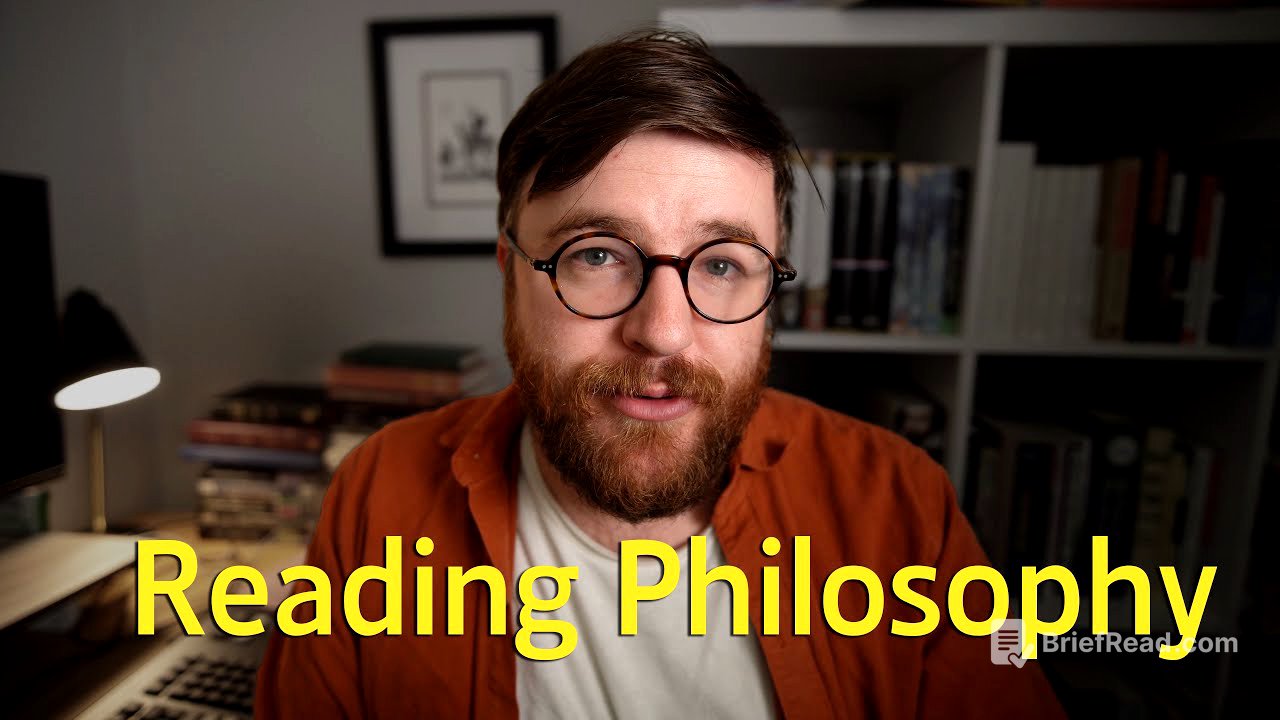TLDR;
This video gives tips on how to read philosophy, focusing on argumentative texts. It stresses preparing the reading environment, reading texts twice (once for understanding, once for engagement), taking notes to actively grapple with ideas, and identifying the book's topic, philosopher's thesis, historical context, and core arguments. The aim is to transition from passively reading to actively engaging with philosophical arguments.
- Prepare a distraction-free environment for focused reading.
- Read philosophy texts twice: first for overall understanding, then for detailed engagement.
- Take notes to distill ideas and identify key points, confusions, and connections.
- Identify the book's topic, the philosopher's thesis, historical context, and arguments.
Intro [0:00]
The video is about how to read philosophy or any argumentative text. Unlike reading fiction, philosophy requires techniques to understand the author's point and arguments. The video will provide tips to help people get started with reading philosophy.
Creating the Right Environment [0:35]
Before you start reading philosophy, make sure you create the right environment. Unlike reading a novel, philosophy needs a quiet, distraction-free space where you can focus. Find a good spot with a surface for your book and notes. This helps you concentrate, which is important because philosophy needs intensive reading to follow ideas across paragraphs and chapters.
Reading Twice: Understanding and Engaging [1:29]
To properly read philosophy, read each text twice. The first time, read quickly to grasp the main point and structure of the book. The second time, go deeper into the details of the arguments. There are two types of reading: reading to understand (learning what a philosopher said) and reading to engage (assessing arguments and forming your own beliefs). It's hard to do both at once, so read the book quickly first, noting important points, and then reread it to analyze the arguments and examples. Engaging with arguments and thinking like a philosopher means you've moved beyond just repeating what they said.
Taking Effective Notes [4:25]
Taking notes is important for actively reading and grappling with philosophical texts. But be careful not to take too many notes, which can clutter your thinking. Notes should help you distill and synthesize ideas, and connect them to other thinkers. When taking notes, look for three things: important points (mark with a check or star), points of confusion (mark with a question mark to revisit later), and points of connection to other thinkers. Making these connections helps you engage in a process of reading, rereading, assessing, and reassessing.
Key Questions to Ask About a Book [6:39]
When reading philosophy, you should be able to answer these questions about any book: What is this book about? (the topic). What is the philosopher arguing for? (the main and smaller theses). How does the philosopher situate themselves in history or in the existing literature? (agreement or disagreement with previous thinkers). What are the arguments presented? (evidence supporting the conclusion). Determine if the arguments are valid (well-structured) and sound (true premises). When looking at arguments, don't just try to disprove them; figure out if they're essential to the book's point and how you can reconstruct or improve them.
Conclusion [9:46]
Reading philosophy is difficult but rewarding. It can improve your reading skills in other subjects. Use these tips, find a good book, and give it a try.









